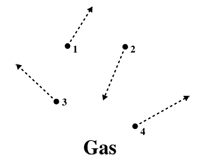
Cohesion and adhesion are two fundamental concepts in the realm of intermolecular forces and surface interactions. While distinct in their applications, these phenomena share several similarities. This article explores the commonalities between cohesion and adhesion, delving into their significance in various natural and artificial contexts.

Definition and Fundamentals:
Cohesion: The force of attraction between molecules of the same substance. It is responsible for the formation of liquid droplets and the integrity of liquids.
Adhesion: The force of attraction between molecules of different substances. Adhesion allows liquids to wet surfaces and contributes to capillary action.
Molecular Forces:
Cohesion: Involves intermolecular forces, such as hydrogen bonding, van der Waals forces, and dipole-dipole interactions, that hold identical molecules together.
Adhesion: Relies on similar intermolecular forces but operates between molecules of different substances, promoting their attraction.
Surface Tension:
Cohesion: Contributes to surface tension, the property that allows certain insects to walk on water and water droplets to form.
Adhesion: Influences surface tension by enabling liquids to spread over surfaces, as seen when water adheres to and wets the sides of a glass.
Capillary Action:
Cohesion: Plays a role in capillary action by allowing liquids to rise in narrow tubes due to the cohesive forces between liquid molecules.
Adhesion: Enhances capillary action as liquids adhere to the surfaces of the tube, pulling the liquid upward against gravity.
Biological Implications:
Cohesion: Essential for the upward transport of water in plants through the cohesion-tension theory.
Adhesion: Facilitates the adhesion of blood to vessel walls, contributing to blood circulation in the human body.
Engineering and Material Science:
Cohesion: Influential in the design of materials, such as adhesives and coatings, where maintaining the integrity of the substance is crucial.
Adhesion: Important in the development of adhesives, ensuring strong bonds between different materials.
Conclusion:
In summary, cohesion and adhesion, although distinct phenomena, share common molecular forces and contribute to numerous natural and artificial processes. Understanding these similarities is essential for applications in fields ranging from biology to material science.
Here’s a simplified comparison table highlighting the similarities between cohesion and adhesion:
| Aspect | Cohesion | Adhesion |
| Definition | Force of attraction between same molecules | Force of attraction between different molecules |
| Molecular Forces | Involves intermolecular forces within a substance (e.g., hydrogen bonding, van der Waals forces) | Utilizes similar intermolecular forces but operates between molecules of different substances |
| Surface Tension | Contributes to surface tension, allowing liquids to form droplets and exhibit certain behaviors | Influences surface tension by allowing liquids to wet surfaces and spread |
| Capillary Action | Promotes capillary rise in narrow tubes due to cohesive forces | Enhances capillary action as liquids adhere to tube surfaces, aiding upward movement |
| Biological Implications | Essential for the cohesion-tension theory in plants, facilitating water transport | Facilitates blood circulation by allowing adhesion of blood to vessel walls |
| Engineering Applications | Important in the design of materials like adhesives, coatings, and substances requiring integrity | Crucial in the development of adhesives for creating strong bonds between different materials |
Note: This table provides a concise overview of the similarities between cohesion and adhesion. The actual manifestations of these forces can vary depending on specific substances and environmental conditions.
Frequently Asked Questions (FAQ) on Cohesion and Adhesion:
Q1: What is the main difference between cohesion and adhesion?
A1: Cohesion refers to the attraction between molecules of the same substance, while adhesion involves the attraction between molecules of different substances.
Q2: How do cohesion and adhesion contribute to the behavior of liquids?
A2: Cohesion is responsible for surface tension and the formation of droplets, while adhesion allows liquids to wet surfaces and exhibit capillary action.
Q3: What are some examples of cohesion in nature?
A3: Cohesion is evident in the formation of raindrops, the ability of water to bead up on a waxed car, and the behavior of water droplets on a spider’s web.
Q4: Can you provide examples of adhesion in everyday life?
A4: Adhesion is seen when water sticks to the sides of a glass, when paper towels absorb water due to capillary action, and when a gecko sticks to a wall.
Q5: How do cohesion and adhesion work together in capillary action?
A5: Cohesion allows the liquid to form a concave meniscus in a tube, and adhesion causes the liquid to wet the tube’s surface, contributing to capillary rise.
Q6: In what way is cohesion crucial in plants?
A6: Cohesion is fundamental in the cohesion-tension theory, facilitating the upward transport of water in plants from the roots to the leaves.
Q7: How are cohesion and adhesion utilized in engineering and materials science?
A7: Cohesion is important in designing materials like adhesives, where maintaining substance integrity is key. Adhesion is crucial in developing strong bonds between different materials, as seen in the creation of adhesives.
Q8: Can changes in temperature affect cohesion and adhesion?
A8: Yes, temperature changes can influence the strength of intermolecular forces involved in cohesion and adhesion, affecting behaviors like surface tension and capillary action.
Q9: Are there specific intermolecular forces involved in cohesion and adhesion?
A9: Yes, forces such as hydrogen bonding, van der Waals forces, and dipole-dipole interactions play roles in both cohesion and adhesion, though the substances involved may vary.
Q10: How can a deeper understanding of cohesion and adhesion benefit scientific research and everyday life?
A10: Understanding these forces is crucial in various scientific fields, from biology to materials science. In everyday life, this knowledge informs activities such as cooking, cleaning, and understanding natural phenomena like rain and dew formation.
A11: In confined spaces, cohesive forces can cause liquids to form spherical droplets, while adhesive forces contribute to wetting surfaces. This behavior is essential in inkjet printing and microfluidics.
Q12: Can cohesion and adhesion be influenced by the chemical composition of substances?
A12: Yes, the chemical composition of substances determines the types and strengths of intermolecular forces, directly impacting cohesion and adhesion. For example, substances with polar molecules may exhibit stronger adhesive forces.
Q13: How are cohesion and adhesion relevant in the context of detergent and soap action?
A13: Detergents and soaps utilize both cohesion and adhesion. Cohesion helps break down surface tension, allowing water to spread and wet surfaces. Adhesion helps the detergent molecules adhere to grease and oil, facilitating their removal.
Q14: Can cohesion and adhesion be observed on a macroscopic scale?
A14: Yes, macroscopic examples include the formation of water droplets on a car windshield (cohesion) and the absorption of water by a paper towel (adhesion).
Q15: Are there real-world applications where engineers leverage cohesion and adhesion for specific purposes?
A15: Yes, engineers utilize these forces in designing adhesives for bonding materials, in the development of medical adhesives for wound closure, and in creating coatings for various surfaces.
Q16: How do cohesion and adhesion contribute to the formation of menisci in liquids?
A16: Cohesive forces between liquid molecules cause a concave meniscus in a narrow tube, while adhesive forces between the liquid and the tube’s surface determine the extent of wetting.
Q17: Can changes in atmospheric pressure influence cohesion and adhesion behaviors?
A17: Atmospheric pressure can impact the boiling point of liquids, affecting cohesion and adhesion. For instance, in a lower pressure environment, liquids may exhibit different behaviors in capillary tubes.
Q18: How do cohesive and adhesive forces play a role in the effectiveness of certain medical treatments?
A18: Medical adhesives leverage both cohesion and adhesion to close wounds effectively. Additionally, certain drug delivery systems rely on adhesive forces to adhere to specific tissues.
Q19: Are there ongoing research efforts to better understand cohesion and adhesion for practical applications?
A19: Yes, ongoing research explores the development of innovative materials, adhesives, and coatings by harnessing the principles of cohesion and adhesion. This has implications for fields such as nanotechnology and biomimicry.
Q20: Can cohesion and adhesion be manipulated for specific applications in space exploration or microgravity environments?
A20: Understanding these forces is crucial in designing fluid systems for space exploration, where capillary action and surface interactions become unique challenges that need to be addressed for fluid management.












Leave a Reply